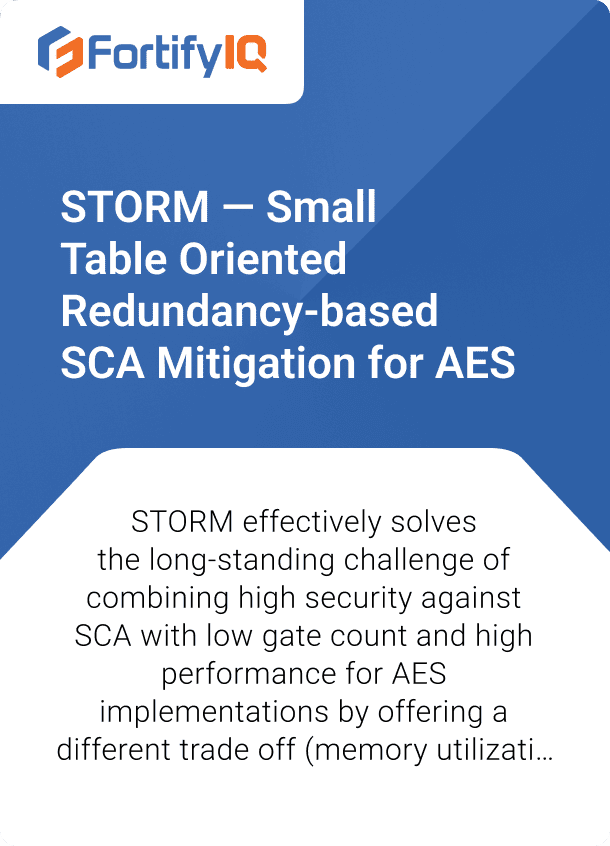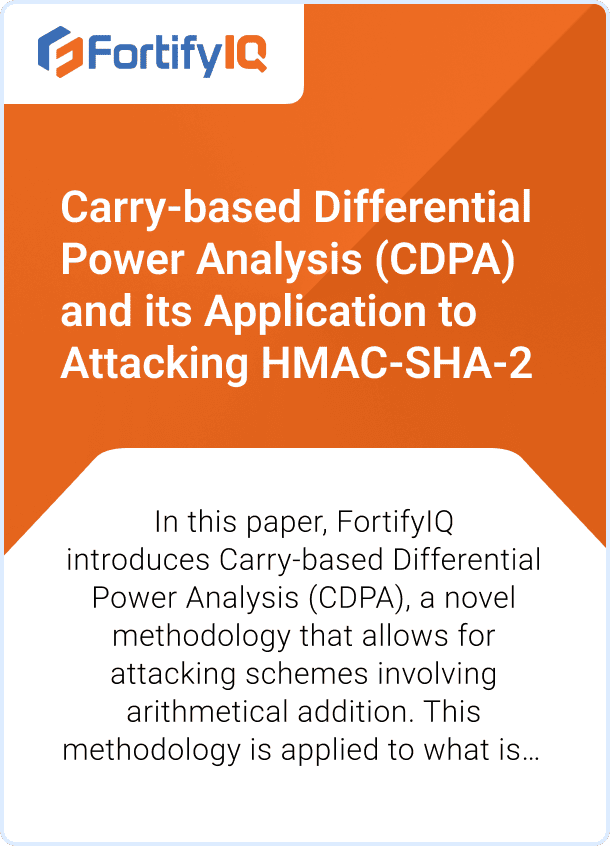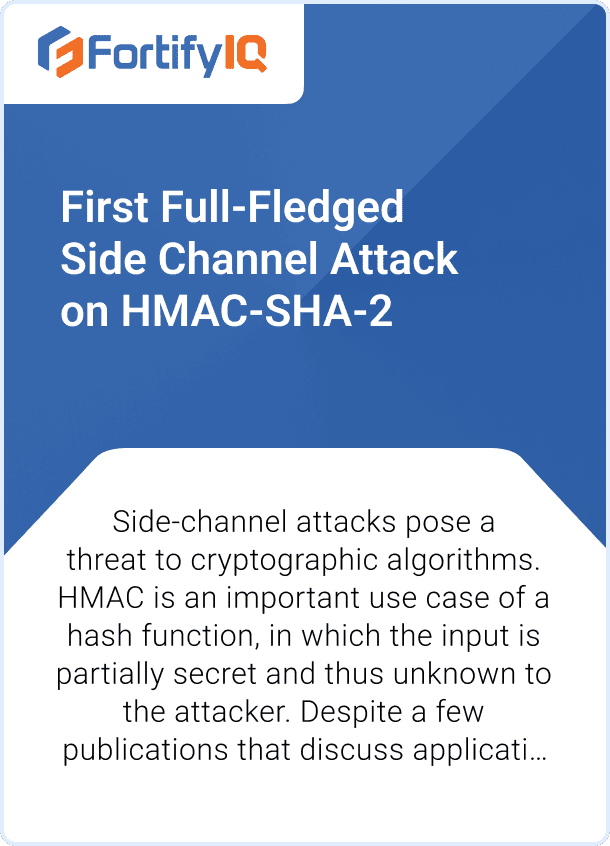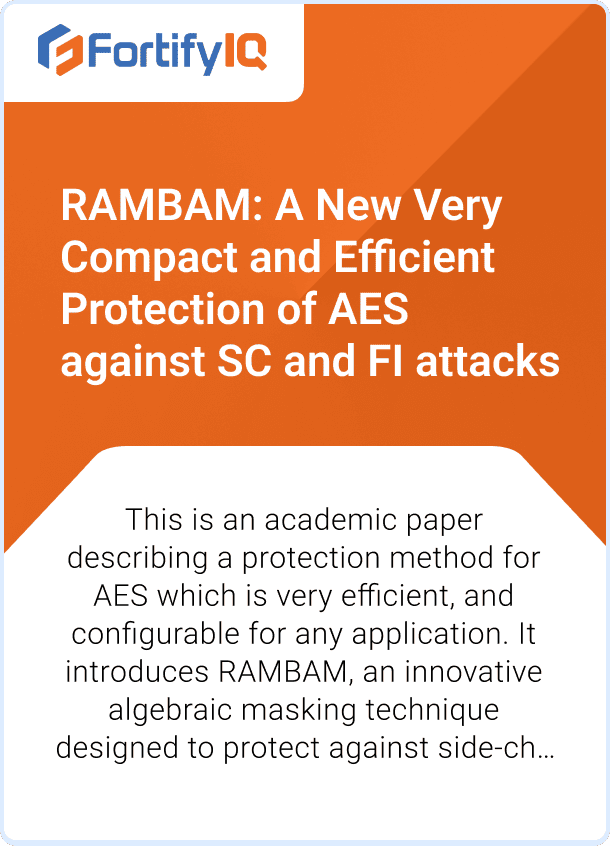
Academic Papers
This section features FortifyIQ’s academic publications. Some papers present AES protection techniques against side-channel and fault injection attacks with minimal area, power, and performance overhead, while others demonstrate side-channel attacks on SHA-2-based HMAC, highlighting the need for robust countermeasures.

Most Recent

STORM effectively solves the long-standing challenge of combining high
security against SCA with low gate count and high performance for AES implementations
by offering a different tradeoff (memory utilization) that may be preferable to RAMBAM
in many practical cases.

In this paper, FortifyIQ introduces Carry-based Differential Power Analysis (CDPA), a novel methodology that allows for attacking schemes involving arithmetical addition. This methodology is applied to what is believed to be the first published full-fledged attack on HMAC-SHA-2 which does not require a profiling stage.


FortifyIQ presents a novel practical template attack on HMAC-SHA-2 intended primarily against its implementations in hardware. Side-channel attacks pose a threat to cryptographic algorithms. HMAC is an important use case of a hash function, in which the input is partially secret and thus unknown to the attacker. Despite a few publications that discuss applications of power analysis techniques to attack HMAC-SHA-2, this is the first generic method that shows a full attack on its hardware implementation.

This is an academic paper describing a protection method for AES which is very efficient, and configurable for any application. It introduces RAMBAM, an innovative algebraic masking technique designed to protect against side-channel attacks and SIFA1.